Volume 6 - Protective coatings
- camille99bach
- May 24, 2024
- 4 min read
What is the issue?
When sprinklers are installed in environments that present specific challenges to maintaining sprinkler specifies, additional measures to protect sprinkler heads may be needed. For example, fire sprinklers located in spray paint booths may be subject to paint over-spray residue. It can result in deposits on the sprinkler heads, which could adversely impact sprinkler performance. Any paint applied after the sprinkler has left the manufacturing process could impact the coverage pattern and thermal sensitivity performance. Dried paint in the deflector could prevent water from reaching the desired areas during a fire, and dried paint on the release mechanism or water seal could insulate or prevent release, respectively.
Sprinkler heads not protected in ducts (painting lines) – What is the response time index of these sprinkler heads? – France
Why do we have to protect sprinkler heads?
Extract from Annex A of NFPA 13: A.6.2.6.2 “Painting of sprinklers can retard the thermal response of the heat-responsive element, can interfere with the free movement of parts, and can render the sprinkler inoperative. Moreover, painting can invite the application of subsequent coatings, thus increasing the possibility of a malfunction of the sprinkler.”
NFPA 13 requires some specific measures for these situations: Extract from NFPA 13:
Sprinklers protecting spray areas and mixing rooms in resin application areas shall be protected against overspray residue so that they will operate in the event of a fire. Where protected in accordance with the above, cellophane bags having a thickness of 0.003 in. (0.08 mm) or less or thin paper bags shall be used. Sprinklers that have been painted or coated shall be replaced.
Most common sandwich bags are not cellophane bags and shall not be used.
Why should we install cellophane bags rather than plastic bags?
Extract from Annex A of NFPA 13: Plastic bags should not be used for this purpose due to the fact that shrinkage prior to development of temperatures needed to ensure sprinkler activation can interfere with proper sprinkler operation and development of spray patterns. The prohibition against plastic bags should include polypropylene bags commonly marketed as “cello” bags. True cellophane degrades rather than melts and, like paper, does not display shrinkage.
It shows an example of a cellophane bag being used to protect a It shows a properly protected sprinkler from overspray by a thin
sprinkler in a paint spray booth. A report of testing conducted in paper bag. A fire in the spray booth burned away the paper bag
1993 included an observation that shrinkage of plastic bags was allowing the fire sprinkler to properly operate and control the fire –
a potential problem, which was confirmed during research testing US (MSFN Copyright)
conducted by the National Fire Sprinkler Association in 2008.
(Extract from the NFPA 13 Handbook V2013) Protective coverings shall be replaced frequently so that heavy residue deposits do not accumulate. Sprinklers that have been painted or coated by overspray or residues shall be replaced with new listed sprinklers of the same characteristics, including orifice size, thermal response, and water distribution.
Example of a Cellophane bag installed – US (MSFN Copyright) Example of a Cellophane bag installed in a painting line – SPAIN
For the sprinkler heads located in the ducts, it is very important to replace the protective covering used regularly. For that, propose your clients install easy access to the ducts to facilitate the access. Remind the maintenance team to use the specific wrench adapted to the sprinkler head installed.
Example traps installed on a duct to regularly replace the protective covering and to get an easily access during the cleaning operations – FRA
Interesting link
Summary of the video: paint clearly affects the sprinkler’s response time, but the results are quite varied. Some sprinklers didn’t release at all when fully painted, and several only had a partial release (pressure loss was detected, but the waterway didn’t fully clear due to parts of the release mechanism and/or water seal remaining in place). Note, however, that some sprinklers with paint still performed just fine. For the quick response sprinklers tested, all were fully released, and only one sprinkler did not go off in the required amount of time to meet the quick response definition. While some may argue that this is the reason for NFPA to allow small amounts of paint on the sprinkler, at this time and with the current information available, it is too much of a risk to allow any aftermarket paint which is why NFPA requires that a sprinkler with any amount of paint must be replaced. There is significant variability in the performance of aftermarket painted sprinklers, and there is potential for even a drop of paint in the right spot to impact thermal performance. The exception of being painted only on the sprinkler arms would not impact the coverage pattern or thermal response, so sprinklers with this paint may not need to be considered for replacement during the floor-level inspection.


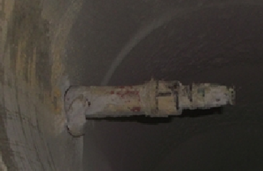
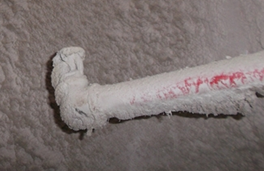
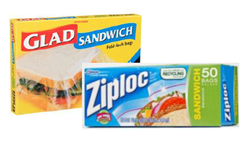
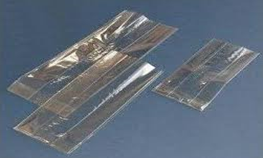

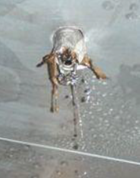

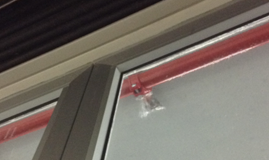
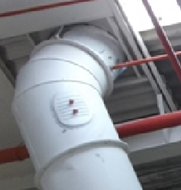
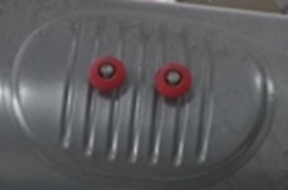
Comments